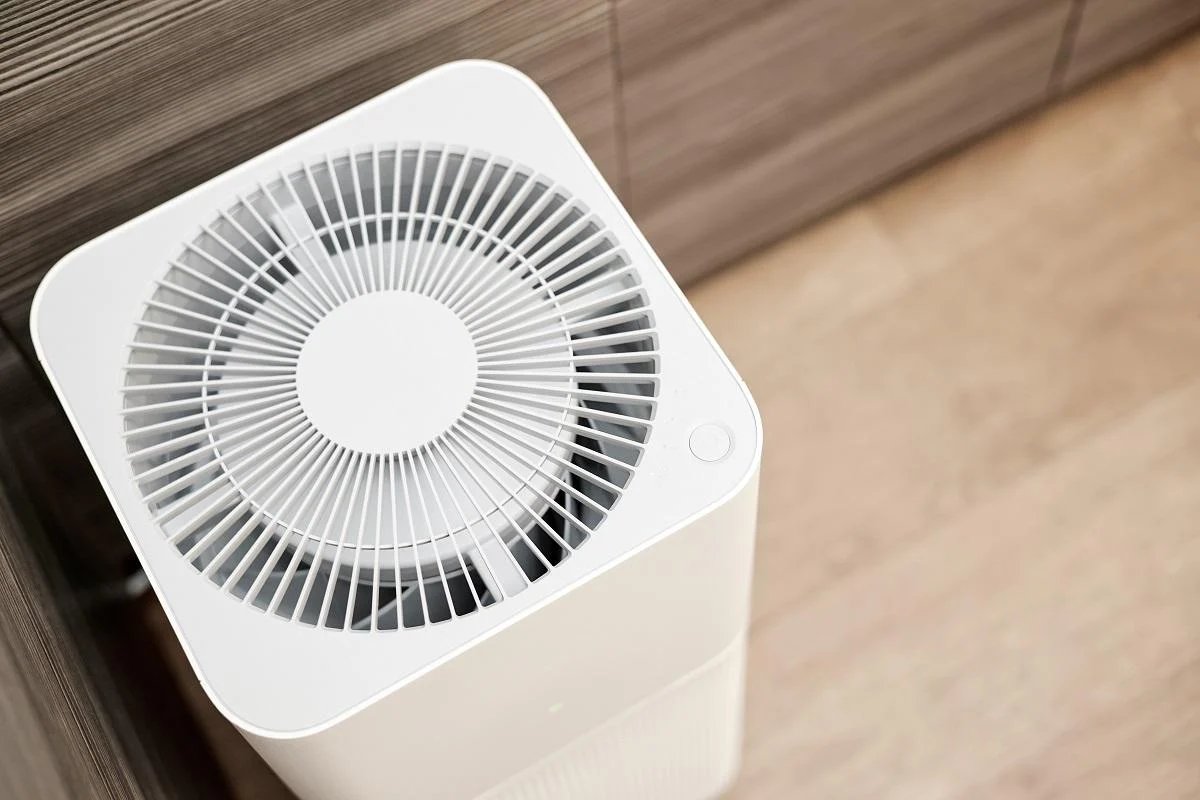Home>Health and Wellness>The Shocking Dangers Of Dehumidifiers You Never Knew


Health and Wellness
The Shocking Dangers Of Dehumidifiers You Never Knew
Published: January 23, 2024
Discover the hidden health risks of dehumidifiers and safeguard your well-being. Learn how to protect your health and wellness from potential dangers.
(Many of the links in this article redirect to a specific reviewed product. Your purchase of these products through affiliate links helps to generate commission for Noodls.com, at no extra cost. Learn more)
Table of Contents
Introduction
Dehumidifiers are commonly used to reduce the moisture levels in indoor spaces, making them an essential appliance in many homes and businesses. While these devices offer numerous benefits, such as preventing mold growth and improving air quality, there are hidden dangers associated with their usage that often go unnoticed. In this article, we will delve into the lesser-known hazards linked to dehumidifiers, shedding light on the potential risks they pose to our health and safety.
Understanding the potential dangers of dehumidifiers is crucial for every individual who relies on these devices to maintain a comfortable and healthy indoor environment. By exploring these risks, we can take proactive measures to mitigate them and ensure the safe and effective use of dehumidifiers in our daily lives. Let's uncover the shocking truths about the dangers of dehumidifiers that are often overlooked, and learn how to safeguard ourselves and our loved ones from these potential hazards.
Understanding Dehumidifiers
Dehumidifiers are appliances designed to regulate the moisture levels in indoor spaces. They work by drawing in humid air, extracting the moisture, and then releasing drier air back into the environment. These devices are commonly used in areas with high humidity levels, such as basements, bathrooms, and laundry rooms, to prevent mold and mildew growth and maintain a comfortable living environment.
There are two main types of dehumidifiers: refrigerant (compressor-based) and desiccant (absorption-based). Refrigerant dehumidifiers operate by passing humid air over cold coils, causing the moisture to condense and collect in a reservoir, while desiccant dehumidifiers use a drying agent to absorb moisture from the air.
Dehumidifiers offer several benefits, including the prevention of mold and mildew growth, reduction of musty odors, and protection of wooden furniture and fixtures from moisture damage. Additionally, they can help alleviate respiratory issues by improving indoor air quality and reducing allergens.
Understanding the function and purpose of dehumidifiers is essential for maximizing their effectiveness and ensuring their safe operation. By being aware of how these devices work and their potential impact on indoor air quality, individuals can make informed decisions about when and where to use dehumidifiers to achieve optimal results.
In the following sections, we will explore the potential hazards associated with dehumidifiers, shedding light on the lesser-known risks that users should be mindful of. By gaining a comprehensive understanding of these risks, individuals can take proactive measures to mitigate potential dangers and promote the safe and responsible use of dehumidifiers in their homes and workplaces.
Potential Hazards of Dehumidifiers
Dehumidifiers, while beneficial in controlling indoor moisture levels, pose potential hazards that are often overlooked. Understanding these risks is crucial for ensuring the safe and responsible use of these devices. By shedding light on these lesser-known dangers, individuals can take proactive measures to mitigate potential hazards and safeguard their well-being. Let's delve into the potential risks associated with dehumidifiers:
Mold and Bacteria Growth
Ironically, the very appliance designed to combat mold and mildew can become a breeding ground for these harmful microorganisms if not properly maintained. The collection reservoir of a dehumidifier provides an ideal environment for mold and bacteria to flourish, especially when left uncleaned for extended periods. As the appliance continuously draws in moisture from the air, any accumulated mold or bacteria can be dispersed back into the environment, compromising indoor air quality and potentially causing respiratory issues.
Fire Hazards
Refrigerant dehumidifiers, in particular, pose a fire hazard if not maintained and operated correctly. The cooling coils within these devices can become excessively cold, leading to frost buildup. If the frost is not regularly removed, it can pose a fire risk when the appliance's compressor attempts to operate under strained conditions. Additionally, electrical malfunctions, such as frayed cords or overheating components, can also result in potential fire hazards.
Electric Shock
Improper handling or maintenance of dehumidifiers can lead to electric shock hazards. The presence of moisture within the appliance, combined with electrical components, increases the risk of electrical malfunctions and shock hazards. Furthermore, if the dehumidifier's electrical components are exposed to water or moisture due to leaks or spills, there is a heightened risk of electric shock to users.
Carbon Monoxide Poisoning
In rare cases, desiccant dehumidifiers can produce carbon monoxide as a byproduct of the drying process. If these appliances are not adequately ventilated, the accumulation of carbon monoxide in enclosed spaces can pose a serious health risk, leading to symptoms of poisoning such as headaches, dizziness, and even fatalities in extreme cases.
Understanding these potential hazards associated with dehumidifiers is essential for promoting safe usage practices. By being mindful of these risks, individuals can take proactive steps to mitigate potential dangers and ensure the safe and effective operation of dehumidifiers in their indoor spaces. In the following section, we will explore practical tips for safely using dehumidifiers to minimize these potential hazards and maximize their benefits.
Mold and Bacteria Growth
Mold and bacteria growth within dehumidifiers can pose significant health risks and compromise indoor air quality. Despite being designed to combat moisture-related issues, dehumidifiers can inadvertently become breeding grounds for harmful microorganisms if not properly maintained. The collection reservoir of a dehumidifier provides an ideal environment for mold and bacteria to thrive, especially when left uncleaned for extended periods. As the appliance continuously draws in moisture from the air, any accumulated mold or bacteria can be dispersed back into the environment, potentially causing respiratory issues and other health concerns.
The presence of mold and bacteria in indoor environments can exacerbate allergies, trigger respiratory problems, and contribute to overall discomfort. Individuals with asthma or other respiratory conditions may experience worsened symptoms when exposed to mold and bacteria-infested air. Moreover, prolonged exposure to mold spores and bacteria can lead to more severe health issues, including respiratory infections and allergic reactions.
To mitigate the risk of mold and bacteria growth within dehumidifiers, regular maintenance and cleaning are essential. It is crucial to adhere to the manufacturer's guidelines for cleaning and disinfecting the appliance's collection reservoir and internal components. Additionally, ensuring proper ventilation in the area where the dehumidifier is used can help prevent the buildup of excess moisture and inhibit the growth of mold and bacteria.
Furthermore, utilizing dehumidifiers with built-in features such as antimicrobial filters and self-cleaning functions can help reduce the risk of mold and bacteria proliferation. These features are designed to inhibit the growth of microorganisms within the appliance, promoting cleaner and healthier air output.
By being proactive in addressing the potential for mold and bacteria growth within dehumidifiers, individuals can effectively mitigate health risks associated with indoor air quality. Regular inspection, cleaning, and maintenance of dehumidifiers are essential practices to ensure that these devices continue to fulfill their intended purpose of creating a healthier and more comfortable indoor environment.
Fire Hazards
Fire hazards associated with dehumidifiers, particularly refrigerant models, can pose significant risks if these appliances are not properly maintained and operated. The cooling coils within refrigerant dehumidifiers have the potential to accumulate frost if not regularly defrosted. This frost buildup can lead to strained conditions when the appliance's compressor attempts to operate, posing a fire risk. Additionally, electrical malfunctions, such as frayed cords or overheating components, can also contribute to potential fire hazards.
The accumulation of frost on the cooling coils can lead to overheating of the dehumidifier's components, creating an environment conducive to fire outbreaks. When the compressor struggles to operate due to the presence of frost, it can result in excessive heat generation within the appliance, increasing the risk of a fire. Furthermore, if the frost buildup is not promptly addressed, it can lead to further strain on the electrical components, potentially causing short circuits or electrical fires.
Electrical malfunctions within dehumidifiers, such as frayed power cords or damaged internal wiring, can also pose fire hazards. Over time, wear and tear on the electrical components of the appliance can lead to compromised insulation or exposed wiring, increasing the risk of electrical sparks and subsequent fires. Moreover, overheating of internal components due to prolonged usage or inadequate ventilation can escalate the likelihood of electrical malfunctions and fire hazards.
To mitigate the risk of fire hazards associated with dehumidifiers, regular maintenance and inspection are crucial. It is essential to adhere to the manufacturer's guidelines for cleaning and servicing the appliance, including defrosting the cooling coils as recommended. Additionally, ensuring proper ventilation around the dehumidifier and keeping flammable materials away from the appliance can help minimize the risk of fire outbreaks.
Furthermore, proactive measures such as regular inspection of the power cord for signs of damage, ensuring proper grounding of the appliance, and avoiding overloading electrical circuits can contribute to fire prevention. Individuals should also be vigilant for any unusual odors, sounds, or signs of overheating when the dehumidifier is in operation, as these may indicate potential electrical issues that warrant immediate attention.
By being proactive in addressing fire hazards associated with dehumidifiers, individuals can significantly reduce the risk of fire outbreaks in their indoor environments. Practicing regular maintenance, adhering to safety guidelines, and promptly addressing any signs of potential electrical malfunctions are essential steps in promoting the safe and responsible use of dehumidifiers while minimizing fire hazards.
Electric Shock
Improper handling or maintenance of dehumidifiers can lead to electric shock hazards, posing significant risks to individuals using these appliances. The presence of moisture within the dehumidifier, combined with its electrical components, increases the likelihood of electrical malfunctions and shock hazards. Furthermore, if the dehumidifier's electrical components are exposed to water or moisture due to leaks or spills, there is a heightened risk of electric shock to users.
The risk of electric shock from dehumidifiers is particularly concerning in areas where moisture accumulation is common, such as basements, laundry rooms, and bathrooms. These environments create an ideal setting for the development of electrical issues within the appliance, as the presence of moisture can compromise the insulation and integrity of the electrical components. When individuals come into contact with a malfunctioning or improperly maintained dehumidifier, the risk of electric shock becomes a pressing concern, emphasizing the importance of understanding and addressing this potential hazard.
To mitigate the risk of electric shock, it is crucial to prioritize regular maintenance and inspection of dehumidifiers. This includes ensuring that the appliance is kept clean and free from moisture accumulation within its internal components. It is imperative to adhere to the manufacturer's guidelines for cleaning and servicing the dehumidifier, as neglecting these maintenance practices can increase the likelihood of electrical malfunctions and shock hazards.
Additionally, individuals should be vigilant for any signs of water leaks or moisture accumulation around the dehumidifier, as these issues can compromise the safety of the appliance. Promptly addressing any leaks or spills and ensuring that the dehumidifier is positioned in a dry and well-ventilated area can help minimize the risk of electric shock hazards.
Furthermore, individuals should exercise caution when handling the power cord and electrical components of the dehumidifier, ensuring that they are not exposed to water or moisture. Regular inspection of the power cord for signs of damage, such as fraying or exposed wiring, is essential to prevent potential electrical hazards. Additionally, avoiding overloading electrical circuits and ensuring proper grounding of the appliance can contribute to reducing the risk of electric shock.
By understanding the potential for electric shock hazards associated with dehumidifiers and implementing proactive maintenance and safety measures, individuals can effectively mitigate the risks and promote the safe use of these appliances in their indoor environments. Prioritizing electrical safety and taking proactive steps to address potential hazards are essential in ensuring the well-being of individuals using dehumidifiers while minimizing the risk of electric shock.
Carbon Monoxide Poisoning
In rare cases, desiccant dehumidifiers can pose a potential risk of carbon monoxide poisoning, presenting a serious health hazard that requires careful consideration. The process of drying air in desiccant dehumidifiers involves the use of a desiccant material, which, if not properly ventilated, can produce carbon monoxide as a byproduct. This colorless, odorless gas, when released into enclosed indoor spaces, can pose a significant threat to the health and safety of individuals.
Carbon monoxide poisoning occurs when this toxic gas is inhaled, leading to its absorption into the bloodstream and subsequent interference with the body's ability to transport oxygen. The symptoms of carbon monoxide poisoning can range from mild to severe, including headaches, dizziness, nausea, confusion, and in extreme cases, unconsciousness and death. Given the insidious nature of carbon monoxide, its presence often goes unnoticed until individuals begin experiencing symptoms, making it a silent yet potentially deadly threat.
To mitigate the risk of carbon monoxide poisoning associated with desiccant dehumidifiers, it is essential to prioritize proper ventilation in areas where these appliances are used. Adequate airflow and ventilation help disperse any carbon monoxide produced by the dehumidifier, reducing the concentration of this toxic gas in the indoor environment. Ensuring that desiccant dehumidifiers are used in well-ventilated spaces, such as open areas or rooms with ample airflow, can significantly minimize the risk of carbon monoxide buildup.
Regular maintenance and inspection of desiccant dehumidifiers are also crucial in preventing the risk of carbon monoxide poisoning. This includes adhering to the manufacturer's guidelines for cleaning and servicing the appliance, as well as monitoring its ventilation and exhaust systems to ensure efficient and safe operation. Individuals should be vigilant for any signs of malfunction or inadequate ventilation in desiccant dehumidifiers, promptly addressing any issues to prevent the accumulation of carbon monoxide in indoor spaces.
Furthermore, the installation of carbon monoxide detectors in areas where desiccant dehumidifiers are used is a proactive measure to enhance safety. Carbon monoxide detectors serve as early warning systems, alerting individuals to the presence of this toxic gas and providing valuable time to evacuate and seek fresh air in the event of a potential carbon monoxide leak.
By understanding the potential risk of carbon monoxide poisoning associated with desiccant dehumidifiers and implementing proactive measures to mitigate this hazard, individuals can prioritize the safety and well-being of occupants in indoor environments. Through proper ventilation, regular maintenance, and the use of carbon monoxide detectors, the risk of carbon monoxide poisoning from desiccant dehumidifiers can be effectively minimized, ensuring a safer and healthier indoor environment for all.
Tips for Safe Dehumidifier Use
-
Regular Maintenance: Schedule routine cleaning and maintenance of your dehumidifier as per the manufacturer's guidelines. This includes emptying and cleaning the water collection reservoir, replacing or cleaning the air filters, and inspecting the appliance for any signs of wear or damage. By keeping your dehumidifier well-maintained, you can ensure its optimal performance and reduce the risk of potential hazards.
-
Proper Ventilation: Position your dehumidifier in a well-ventilated area to facilitate the efficient circulation of air. Adequate ventilation helps prevent the buildup of moisture and minimizes the risk of mold and bacteria growth within the appliance. Additionally, ensure that the area where the dehumidifier is used has sufficient airflow to promote effective moisture removal.
-
Monitor Humidity Levels: Use a separate hygrometer or a dehumidifier with a built-in humidity sensor to monitor the moisture levels in the indoor environment. Aim to maintain a relative humidity level between 30% and 50% to prevent excessive dryness or high humidity, which can both lead to discomfort and potential issues with indoor air quality.
-
Positioning and Clearance: Place the dehumidifier in a location with ample clearance around it, allowing for unrestricted airflow and efficient operation. Avoid obstructing the air intake and exhaust vents of the appliance to ensure optimal performance and reduce the risk of overheating.
-
Electrical Safety: Regularly inspect the power cord and plug of the dehumidifier for any signs of damage or wear. Ensure that the appliance is plugged into a properly grounded outlet and avoid using extension cords, which can pose electrical hazards. Additionally, do not overload electrical circuits by using multiple high-wattage appliances on the same circuit as the dehumidifier.
-
Child and Pet Safety: If you have children or pets in your household, take precautions to prevent access to the dehumidifier. Consider using a dehumidifier with child safety features or placing it in a location that is inaccessible to curious children and pets to avoid potential accidents or tampering.
-
Unplug When Not in Use: When the dehumidifier is not in use for an extended period, such as during drier seasons, unplug the appliance to conserve energy and reduce the risk of electrical malfunctions. Proper storage of the dehumidifier during periods of non-use can also help prolong its lifespan and maintain its effectiveness.
By implementing these tips for safe dehumidifier use, you can promote a healthier and more comfortable indoor environment while minimizing the potential hazards associated with these appliances. Prioritizing regular maintenance, proper ventilation, and electrical safety measures ensures the safe and effective operation of dehumidifiers, contributing to a safer living space for you and your family.
Conclusion
In conclusion, while dehumidifiers offer valuable benefits in controlling indoor moisture levels and improving air quality, it is essential to acknowledge and address the potential hazards associated with these appliances. The insights gained from understanding the risks of mold and bacteria growth, fire hazards, electric shock, and carbon monoxide poisoning highlight the importance of proactive maintenance and safe usage practices.
By recognizing the potential for mold and bacteria growth within dehumidifiers, individuals can prioritize regular cleaning and maintenance to mitigate the risk of compromised indoor air quality. This includes adhering to manufacturer guidelines, ensuring proper ventilation, and utilizing features designed to inhibit the proliferation of harmful microorganisms.
The awareness of fire hazards linked to dehumidifiers underscores the significance of regular inspection, defrosting, and adherence to safety guidelines. By maintaining the appliance and addressing potential electrical malfunctions, individuals can reduce the risk of fire outbreaks and promote a safer indoor environment.
Understanding the risk of electric shock from dehumidifiers emphasizes the need for vigilant maintenance, proper handling, and electrical safety measures. By implementing proactive practices, individuals can minimize the risk of electric shock hazards and prioritize the well-being of occupants in indoor spaces.
The potential for carbon monoxide poisoning from desiccant dehumidifiers underscores the importance of proper ventilation, regular maintenance, and the use of carbon monoxide detectors. By addressing these risks, individuals can create a safer and healthier indoor environment, reducing the potential for carbon monoxide exposure.
In implementing the tips for safe dehumidifier use, individuals can promote a healthier and more comfortable indoor environment while minimizing the potential hazards associated with these appliances. Prioritizing regular maintenance, proper ventilation, and electrical safety measures ensures the safe and effective operation of dehumidifiers, contributing to a safer living space for occupants.
By acknowledging and addressing the potential hazards of dehumidifiers, individuals can maximize the benefits of these appliances while prioritizing the safety and well-being of themselves and their families. Through informed usage and proactive maintenance, the risks associated with dehumidifiers can be effectively mitigated, creating a healthier and more comfortable indoor environment for all.













